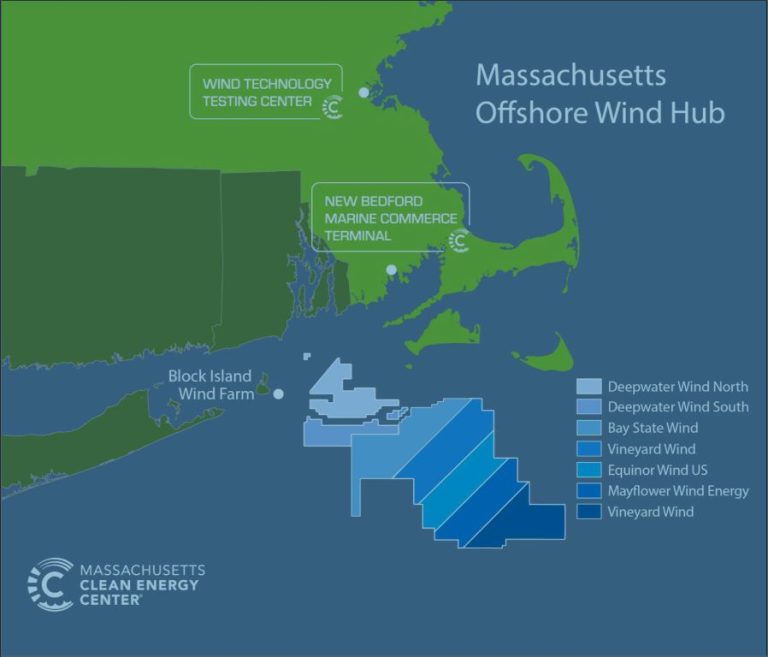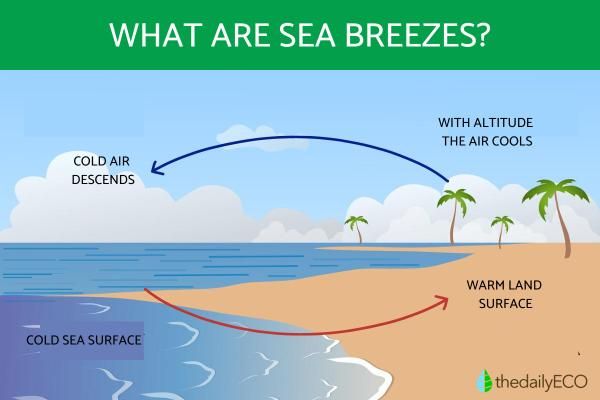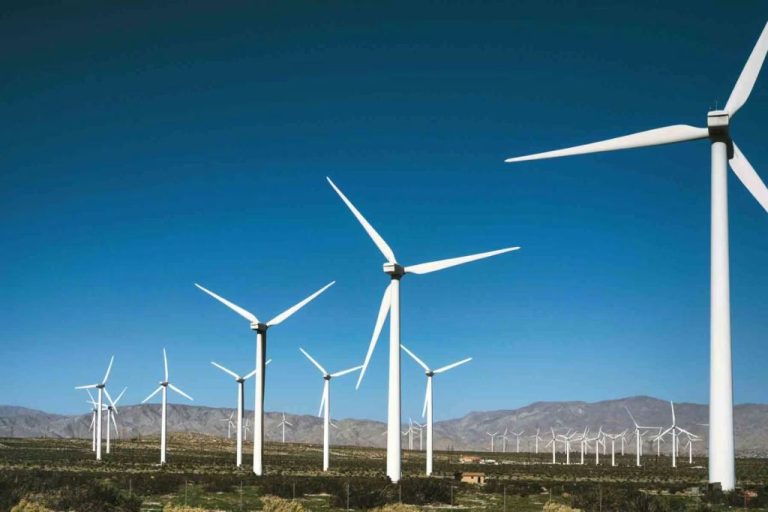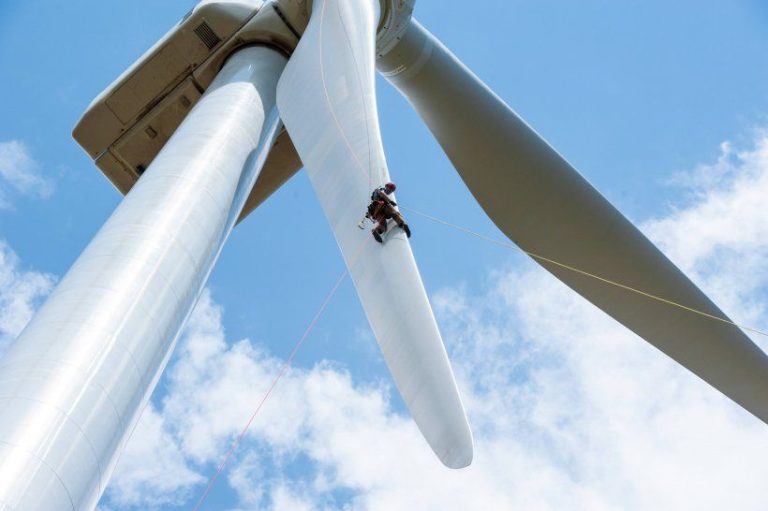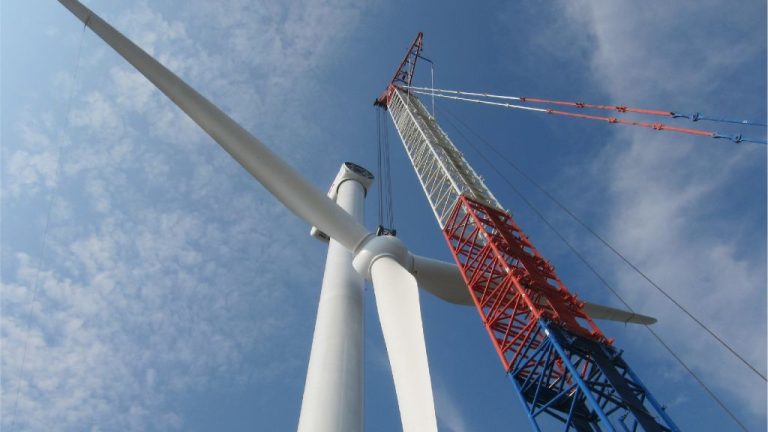Is A Wind Turbine Enough To Power A House?
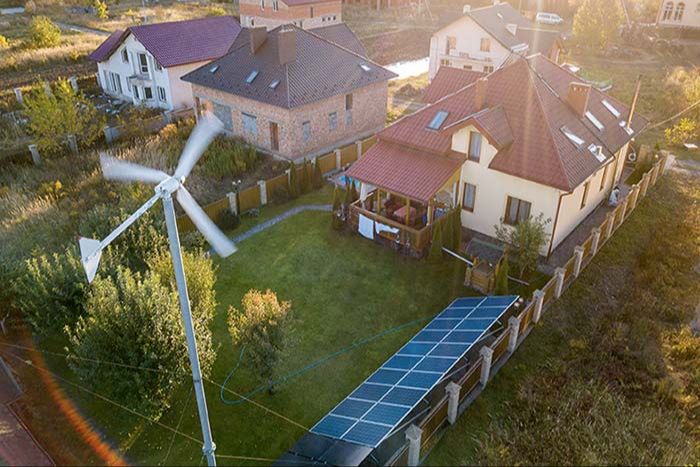
With rising electricity costs and increasing awareness of the dangers of fossil fuels, many homeowners are interested in generating their own renewable energy. Installing a wind turbine is one option that allows homeowners to harness wind power and reduce their dependence on the grid. But is a single wind turbine enough to fully power a house? There are many factors to consider.
In this article, we will take a comprehensive look at whether or not a wind turbine can realistically provide all the electricity an average home needs. We’ll examine typical home energy usage, variables that impact wind turbine output, case studies of real-world installations, and the costs involved. You’ll get a complete picture of the pros, cons, and feasibility of using a wind turbine system for 100% of a home’s energy needs.
Average Home Energy Usage
A typical U.S. home uses between 840 and 3,300 kWh per month, with the average household consuming around 10,000 kWh annually (Agway Energy). This works out to an average of 28 kWh of electricity usage per day for the typical home (Shrink That Footprint).
The breakdown of electrical usage in a standard home is as follows:
- Heating & Cooling: 36%
- Appliances & Lighting: 34%
- Water Heating: 18%
- Electronics: 12%
Factors like home size, number of occupants, climate, and usage habits can cause electricity consumption to vary widely between households. But in general, an average home requires about 1,200 watts of power usage at any moment to run lights, appliances, heating/cooling systems and electronics (EnergySage).
Factors That Impact Wind Turbine Power Generation
There are several key factors that determine the power output of a wind turbine, including:
Wind Speeds and Patterns – The wind speed through the turbine blades is directly proportional to power output. As wind speed doubles, power output increases by a factor of 8. Wind patterns like direction and consistency also impact productivity (Wind power).
Turbine Size – The larger the rotor diameter and swept area of the blades, the more wind can be captured and converted into rotational energy. Doubling the blade length increases power four-fold (Evaluation of factors affecting wind turbine output power).
Tower Height – Taller towers allow access to stronger and less turbulent winds, boosting output. Power increases exponentially with height above ground (Factors Affecting Wind Power Output).
Location – Placement on open plains or hilltops maximizes exposure to steady winds. Obstacles like buildings and trees create turbulence and reduce productivity.
Wind Turbine Output Calculations
The potential power output of a wind turbine depends on several factors, including the swept area of the blades and the turbine’s power curve. The swept area is the circular area that the turbine blades rotate through, and can be calculated as π * (rotor diameter/2)^2. Larger swept areas allow the turbine to capture more wind energy. The power curve shows the relationship between wind speed and power output for a particular turbine model. Using these factors along with the average annual wind speed, you can calculate the potential average power generation in kilowatt-hours (kWh) per year with the following formula:
Annual energy production (kWh/year) = 0.5 * ρ * swept area * annual average wind speed^3 * number of hours per year * capacity factor
Where ρ is the air density. The capacity factor accounts for turbine downtime and real-world inefficiencies, and is typically around 25-45% for wind turbines.
So for example, if a turbine has a 40 meter diameter rotor (20 m radius) located at a site with a 5 m/s annual average wind speed and a 35% capacity factor, the estimated annual energy production would be:
0.5 * 1.225 kg/m^3 * π * (20 m)^2 * (5 m/s)^3 * 8760 hours * 0.35 = 436,500 kWh/year
As the calculations demonstrate, larger swept areas and higher average wind speeds allow turbines to generate significantly more power. The power curve also plays a major role, as higher efficiency turbines will produce more energy at the same wind speeds.
Sources:
https://www.e-education.psu.edu/emsc297/node/649
Case Studies
There are several real-world examples that demonstrate the viability of powering a home with a single wind turbine. One case study from Energy5 examines a family in the Midwest who installed a 5 kW Bergey Excel turbine on their property (https://energy5.com/case-studies-successful-implementation-of-small-wind-turbines-in-residential-areas). This model has a rated output of 1,500 kWh per month, which was able to offset over 90% of their electricity usage. The homeowners reported that even during low wind periods, the turbine was able to provide 40-60% of their home’s power needs.
Another example from Ram Jack involves a homeowner in Oklahoma who installed a 1 kW Windspire turbine (https://www.ramjack.com/about/case-studies/windspire-wind-turbine-project/). This smaller turbine provided 20-40% of their home’s electricity annually. During optimal wind conditions, the turbine was capable of fully powering their efficient 2,000 square foot home. These case studies demonstrate that a single wind turbine in the 1-5 kW range can provide a substantial amount of a household’s electricity demand, with the proper conditions.
Is a Single Turbine Enough?
The amount of power generated by a single wind turbine is dependent on several factors, including turbine size, wind speed, and consistency of wind resources. According to the U.S. Department of Energy, small wind turbines used for residential purposes typically have power outputs ranging from 400 watts to 20 kilowatts. Larger utility-scale wind turbines can produce upwards of 2-3 megawatts each.
For reference, the average U.S. home consumes around 893 kilowatt-hours (kWh) of electricity per month. This equates to an average power demand of about 1 kW. Therefore, a residential-scale wind turbine in the 5-10 kW range could theoretically meet the power needs of a typical household, assuming there are decent wind speeds and resources in the area.
However, wind power output can fluctuate significantly due to changes in wind speed. Turbines only generate their rated maximum capacity at optimal wind speeds (usually around 30 mph). At lower wind speeds, the output drops off dramatically. Having a grid connection or supplementary power sources like solar PV helps smooth out these fluctuations in renewable production.
Relying entirely on a single wind turbine is difficult for most residences. But with a grid connection and net metering, a properly sized and sited wind turbine could offset 50% or more of an average home’s electricity consumption.
Supplementary Solar Power
Combining solar and wind power systems can provide reliability and resilience for homeowners (Giosolar 1000w Solar & Wind Power Kits Home Off-grid System For Charging 12v Battery400w Wind Turbine Generator + 600w Mono Solar Pan 2018). Solar panels generate electricity during daylight hours, while wind turbines produce power around the clock. Using both technologies helps ensure continuous power production even when one source is not available.
The size of the solar array needed depends on the home’s energy usage and the wind turbine’s rated power. As a rule of thumb, the solar panels should be sized to meet at least 50% of the home’s typical load (Wind Turbine & Solar Panel Combinations: A Guide to Hybrid Systems 2022). For example, supplementing a 5 kW turbine with a 5 kW solar array provides 10 kW total, which can fully power many average homes.
With the right inverter technology, wind and solar power can seamlessly work together in a grid-connected or off-grid system. Properly balancing and integrating the two technologies results in a robust and reliable renewable energy solution for homes (Hybrid Wind and Solar Electric Systems 2022).
Financial Costs
The upfront costs of purchasing and installing a residential wind turbine can vary greatly depending on the size of the system, tower height, property location, permitting requirements, and more. According to EnergySage, small wind turbines for homes generally cost between $3,000 to $5,000 per kW of capacity. So for a 10 kW system, which is suitable for most homes, the turbine alone could cost $30,000 to $50,000.
When factoring in permitting, the concrete base, towers, wiring, inverters, batteries, and installation labor, the total installed costs typically range from $15,000 to $75,000 for a residential system according to HomeServe.
The payback period on a home wind turbine is site dependent, but is often estimated between 10-20 years according to the American Wind Energy Association (https://www.awea.org/wind-101/basics-of-wind-energy/wind-energy-cost). Several factors like energy costs, wind resource, incentives, and system costs impact the return on investment.
While wind turbines can generate free renewable energy over their lifetime, the high initial investment means the payback period is long compared to solar PV systems. However, combining wind and solar can improve the economics by utilizing complementary resources.
Permitting and Regulations
Installing a residential wind turbine involves navigating local zoning laws, securing building permits, and potentially getting approval from a homeowners association (HOA). Zoning laws that impact wind turbines may regulate the height, setback distance, noise, and appearance among other factors (Permitting and Zoning – WINDExchange – Department of Energy). Many municipalities have specific wind turbine zoning ordinances that dictate where and how turbines can be installed. Common zoning requirements include setback distances from property lines, maximum height limits, and noise regulations.
In addition to zoning, most areas require homeowners to obtain building permits before installing wind turbines. The permitting process ensures the turbine meets local building codes and safety standards. Permit applications typically require details on the turbine dimensions, materials, installation plans, and stamped engineering drawings (Wind Turbine Zoning: Wind Power Planning & Permitting Guide).
For homeowners in neighborhoods with HOAs, ARCs, or CDCs, approval from the association may be mandatory before installing a wind turbine. Associations often restrict wind turbines for aesthetic reasons or due to concerns over noise, safety, and decreased property values. Homeowners may need to submit a detailed proposal and go through an application process for architectural review (Chapter 6: Permitting Basics).
Conclusion
Can a single wind turbine adequately power an entire house? Based on the factors we’ve explored related to average home energy usage, wind turbine output, and real-world case studies, the answer seems to be sometimes, but not in all cases. A number of variables like location, turbine size, household energy efficiency, and auxiliary power sources impact whether a single wind turbine can fully power a home.
For most families, relying on a sole wind turbine would not generate enough electricity to meet 100% of energy needs, especially in less windy areas. However, with maximum turbine size, battery storage, low energy usage, and an efficient home, a single turbine can occasionally produce enough power independently. More often, a wind turbine will significantly offset, but not fully replace, other energy sources.
To maximize self-sufficiency from residential wind turbines, the following recommendations may be helpful:
- Implement energy efficiency improvements to minimize electrical usage
- Choose a large-sized turbine allowed by property size and permitting
- Select a windy, open site for the turbine to harness maximum wind flow
- Add solar panels to diversify and supplement clean energy production
- Incorporate battery storage to capture excess power generation
- Compare costs and payback timelines before investing
- Research local permitting and regulations for home wind turbines
With proper planning and conditions, a single wind turbine can generate a substantial portion of a household’s electricity needs. But full energy independence may require additional onsite generation and diligent efficiency steps.

